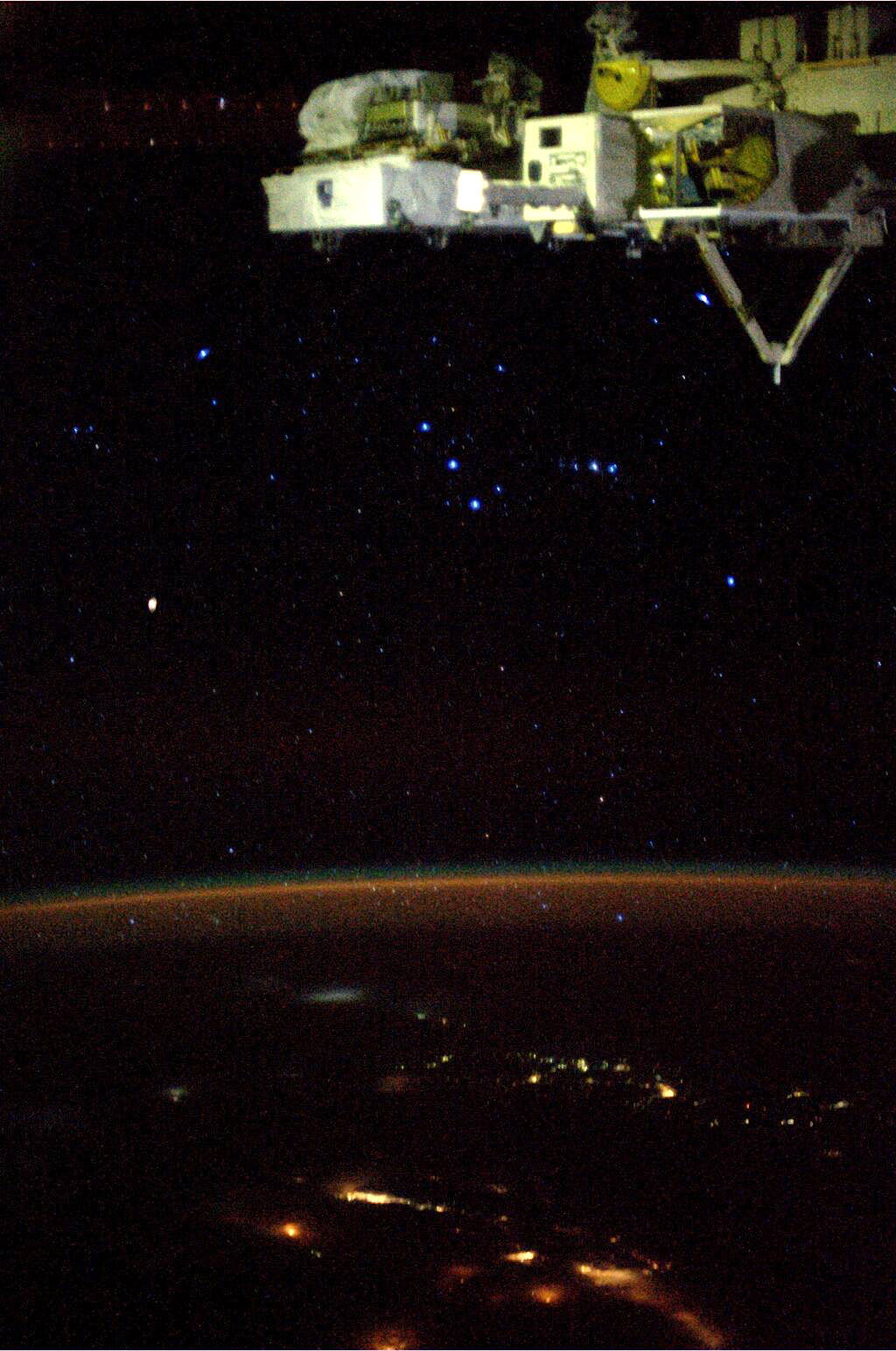The mighty hunter soars above the atmosphere in this photo, taken by NASA astronaut Karen Nyberg currently living and working in space aboard the ISS. One of the most recognizable constellations in night skies all across the Earth, Orion also puts on an impressive display for those well
above
the Earth!
Appearing here to be lying on his right side, the three stars of Orion's famous belt -- Mintaka, Alnilam, and Alnitak, top to bottom -- are center frame, while his sword is nearly horizontal just to the right (the blurry center star of which isn't a star at all, of course, but rather the enormous star-forming
Orion nebula.
)
[caption id="attachment_62989" align="alignright" width="250"]
Betelgeuse, as seen by the Hubble Space Telescope.[/caption]
At Orion's right shoulder is
Betelgeuse
, a huge red giant 20 times more massive than our Sun. Its fiery color is obvious in Karen's photo, mirroring many of the much-closer human-made city lights visible on the ground.
In addition to featuring my favorite constellation, this photo that Karen recently shared on Twitter also serves to prove (to those few who still require evidence of such) that yes, astronauts
can see stars from space.
Very nicely too, I may add. The only reason they are not visible in
all
images is purely photographic -- cameras exposing for a bright scene, like a daylit Earth (or Moon) won't be able to capture the relatively much dimmer light of stars in the same shot, making it look like space is empty of them. Even here we can see a bit of noise in the glowing line of Earth's atmosphere and a little blurring of edges -- that's a result of a high ISO setting to increase camera sensitivity along with a slightly longer shutter speed than your hand can easily keep stable... again, all to better capture the faint streams of photons from distant stars.
Blaze on, mighty Hunter! See this and more views from the ISS
on Karen's Twitter page here.
 Universe Today
Universe Today
